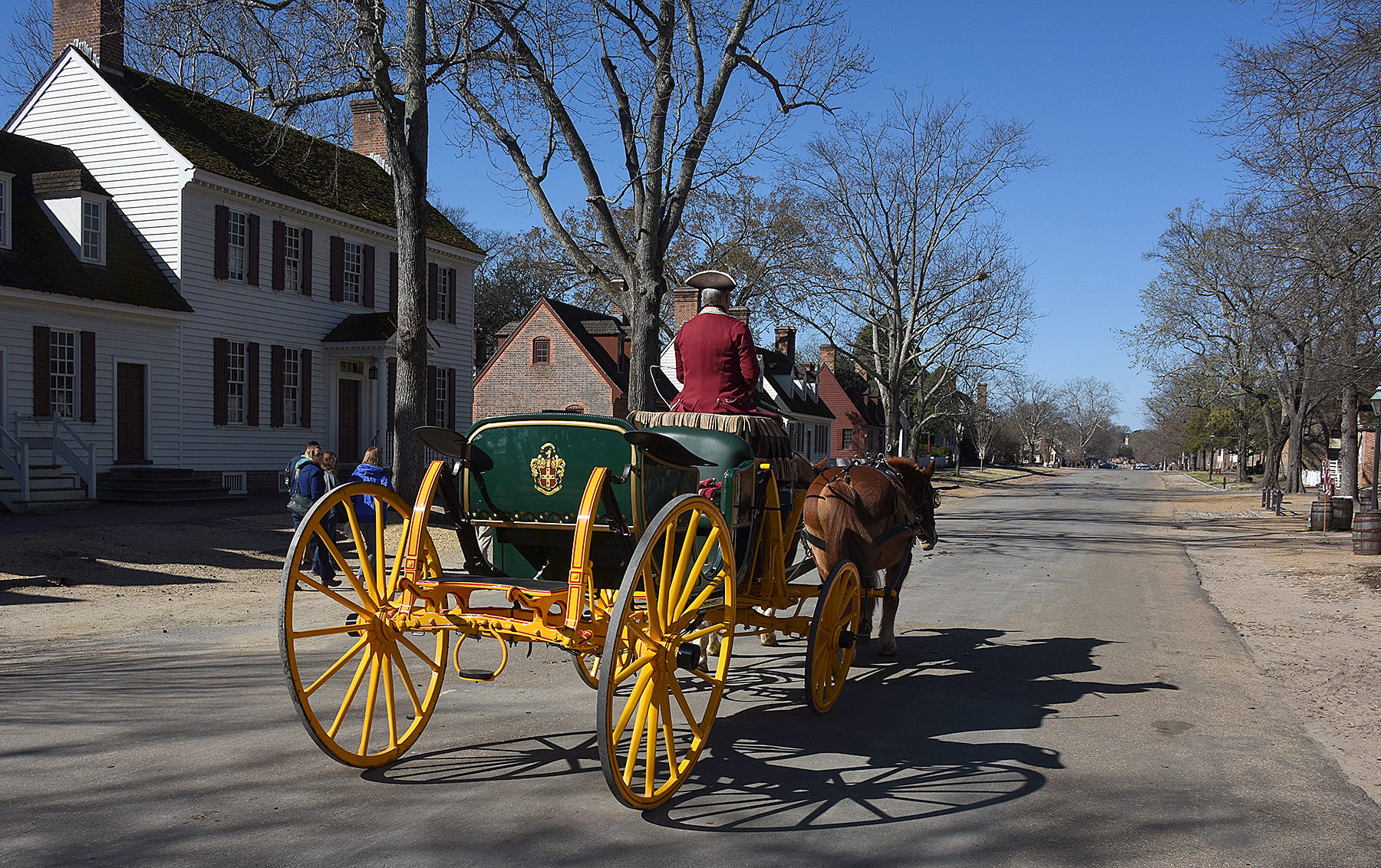Re-Inventing the Wheel: Wheelwrighting at Colonial Williamsburg
.
It’s just a wheel, right?
.
Well, no. If I leaned anything from taking a class in pre-industrial craftsmanship following a year and a half at the Winterthur Program in American Material Culture, it’s never just a wheel, just as it’s ever just a teapot, or a blanket, or a chair. Half the battle of material culture is realizing that any object is a product, not just of a fashion or a personality, but of a shrewd calculation of available materials, physical demands, costs, and the mechanics of production. Often, the most common objects, the ones that have to be functional, replaceable, and affordable, are the most highly engineered. Like a wheel.
A wheel being assembled at the wheelwright’s shop at Colonial Williamsburg. The spokes have been driven into the hub, and the fellies, which form the rim, are being added. Image courtesy of the Historic Trades and Skills of Colonial Williamsburg.
All this went through my head as I stood in the wheelwright’s shop in Colonial Williamsburg in March. I’d already been passed by several carriages in Williamsburg, and each time, I’d had no idea how much specialized knowledge was rolling by under the bright coats of paint—which, incidentally, the wheelwrights also mix. Underneath that paint, the wood is specially chosen for the task it serves. The hubs are elm, because the tight, twisted grain resists splitting even when the spokes are driven in. Colonial wheelwrights also used oak and black gum. The spokes themselves are oak, a hard, durable wood that rives well and, therefore, can be shaped quickly. The fellies, which make up the wooden rim of the wheel, can be oak, ash, or elm. These are protected from the stress of passing over rough roads by iron rims that can be replaced relatively easily, thus prolonging the life of the wheel and the minimizing the expense of maintaining a vehicle.
A carriage at Colonial Williamsburg, with wheels from the wheelwright’s shop. Note the profile of the wheels.
However, as I had learned as a child attempting to build my own vehicles, constructing a wheel is a far more challenging than simply assembling the correct materials. Unlike my untrained attempts, eighteenth-century wheels were beautifully engineered so that use would strengthen rather than weaken them. To start with, the mortises that the spokes in the hub are cut on an angle, so that the joint gets progressively tighter as the spokes are driven in. But this alone wouldn’t save a wheel from loosening under the constant jostling from horses and uneven roads. To avoid that, wheels have a concave shape, or ‘dish,’ built into them. The dish helps focus the forces on the wheel inwards, so that the joints would be driven together over time rather than being shaken apart. However, this only works if the wheel touches the ground at a right angle, meaning that the hubs also have to be angled. The result gives carts and carriages something of a flamboyant look—something I will no longer interpret as artistic license!
Carts, c. 1800. Illustrated in William Henry Pyne, Microcosm, or, a Picturesque Delineation of the Arts, Agriculture, Manufactures, &c of Great Britain (London: W. Miller, 1808). Courtesy Winterthur Library.
Wheelwrights were essential craftsmen in any community, and their craft supported much of the mobility that enabled the consolidation of England, and later America, in the eighteenth century. As a result the huge demand for wheels, wheelwrights on both sides of the Atlantic could count on purchasing timber that had been pre-processed into rough hubs, spokes, and fellies, considerably cutting down on the labor needed to shape a wheel. However, processes that were efficient for wheelwrights were often at odds with the needs of newly empowered governments and the infrastructure they were beginning to build. Public roads were a case in point. For wheelwrights, it was cheapest and easiest to nail on an iron rim in pieces, or strakes, using large bolts, but these bolts were tough on road surfaces. Continuous iron rims, or tire irons, were easier on pavement, but it took considerably more fuel and space to heat them evenly enough to fit around a wheel. In a crowded city, plenty of fuel and enough space to safely build a large fire were not easy for urban wheelwrights to obtain. This collision between craft efficiency and government regulation found no satisfactory solution, but was tacitly negotiated by cart-owners until it faded into technological obsolescence.
Students in Winterthur’s Craftsmanship course assisting in shrinking a tire iron around a wheel at Colonial Williamsburg. Ample fuel, water, and space are all key elements in the process.
Eighteenth-century indentures usually promise that the apprentice will be introduced to the ‘arts and mysteries’ of their chosen craft. We didn’t sign any indentures at Colonial Williamsburg, but we were made privy to many arts that seem entirely mysterious from the outside. The day we visited the wheelwrights, they let us help with the fascinating task of fitting a tire iron. Under the heat of the fire, the rim expands enough that it can be placed around the wheel; dousing it with water cools and tightens the iron around the fellies. Splashing water on the rim, watching the water instantly boil away and the iron shrink before my eyes, I could only marvel at how much knowledge was encompassed in a humble wheel.
.
By Elisabeth Meier, WPAMC Class of 2017
.
For many years, the Department of Historic Trades at Colonial Williamsburg has generously hosted Winterthur students as part of a course in pre-industrial craftsmanship. Over the course of several days, we students work closely with the tradespeople, trying our hands at a wide range of eighteenth century occupations that bring our studies, quite literally, to life. Every year, we leave with a deeper understanding of the material world. This post is part of a series that chronicles our visit in March, 2017.





Leave a Reply